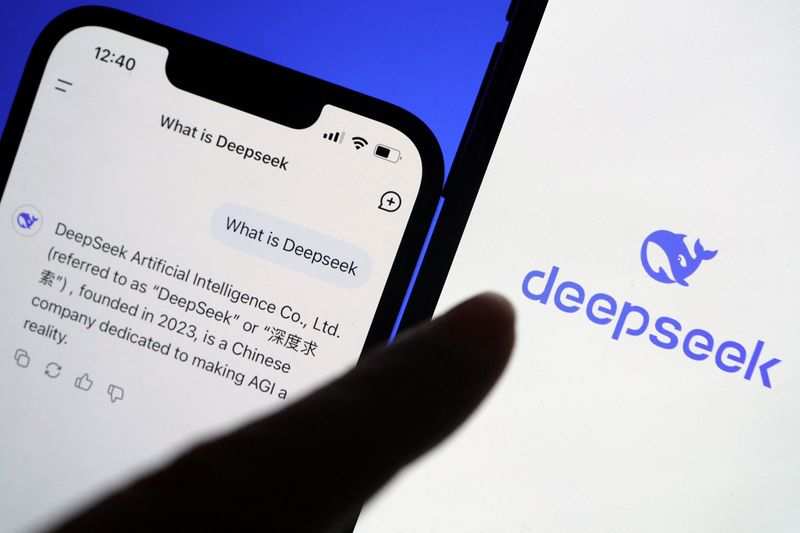Why DeepSeek reminds us of China’s disruptive EV playbook

“The supreme art of war is to subdue the enemy without fighting,” wrote Chinese strategist and philosopher Sun Tzu in ‘The Art of War’. This is precisely what his countryman Liang Wenfeng did when he quietly released an AI model, DeepSeek R1 that jolted the world of AI and caused Nvidia to drop by $600bn in a single day. He did not go to war, quite the opposite; he open-sourced the model, publishing a detailed technical paper on how it was built and inviting the global AI community to build on top of it.
His AI model landed in Silicon Valley with all the subtlety of an intercontinental ballistic missile, not just because of its capability which rivals best-in-class ChatGPT-4o and Meta’s LlaMA, but the resources, or the lack of them, that took to build it. Just two months of effort with a laughably low budget of $5.6m using about 2,000 last-generation chips. Compare that with the US ‘GPT-class’ models, with millions of dollars spent training the models over months in 100,000+ clusters of spanking new H100 chips from Nvidia. If that was not enough, DeepSeek is 10x to 15x smaller, enabling it to run on high-end PCs, rather than on gigantic and expensive data centres. The fact that this ‘missile’ landed a day after the announcement of the $500bn Stargate AI super-computing cluster by President Trump added more fat to the fire.
Much like ChatGPT did two years ago, DeepSeek has made the prevalent narrative of AI requiring bleeding-edge GPUs, gobs of money, gigantic data centres, and expensive talent look quaint now. The establishment players seem to be echoing that: Satya Nadella calls this “super-impressive,” and both Meta and OpenAI have promised to get back to innovating strongly now. However, it is Marc Andreessen calling this “the Sputnik moment” for AI that is the most revealing. It was the launch of the Sputnik satellite by the USSR in 1957, which started the space race and intensified the Cold War between the two superpowers.
Among fears that China has come dangerously close, if not surpassed the US in AI, Trump called it “a wake-up call for our industries”. Meta echoed that by announcing that “we want the US to set the global AI standard, not China.” The psyops seems to have already begun. US media is rife with ‘informed sources’ that DeepSeek has vastly under-declared its costs, and the Chinese govt has subsidised the same. The Chinese media, on the other hand, is full of jingoistic praise of the company, with Wenfeng being felicitated by the Chinese premier. Intriguingly, DeepSeek’s model came under a large-scale cyber-attack a week after the announcement.

There is no doubt that the Chinese have shaken the AI world, but the race is far from won. Models like DeepSeek will democratise AI beyond just a handful of BigTechs controlling it, and that is a welcome move. If the new narrative is right, we can expect thousands of AI models across the world at super low cost, with AI assistants and agents accessible to everyone for every kind of need. This will mean not just greater demand for AI but the race for superiority moving from chips and foundational models to reasoning and thinking applications and achieving artificial general intelligence (AGI) — areas where US companies have a huge head start.
Traditional wisdom in tech of late has been the ‘winner take all mentality’: Microsoft owned the PC, Google owned search, Meta social networking, Amazon ecommerce, and each became a trillion-dollar behemoth. AI does not have to be like that. It could be like the automobile industry, for example, where multiple manufacturers mushroomed across the world, driving down cost and spurring innovation and products for each kind of customer. In fact, the auto industry is a fitting example to emulate here. The West owned this industry with American and European manufacturers dominating the world. Then came a new technology replacing the IC engine with electric. The US innovated with high-cost Tesla and electric BMWs, but the Chinese seem to be out-innovating them with BYD and Nio producing the DeepSeek of EVs at unimaginably low costs and unheard of features. Chinese AI guru Kai-Fu Lee was prescient when he wrote that: “The US innovates, and China executes at scale.”
Will AI go the EV way is the question, or will the US buck this trend and continue to build on their strengths to remain ahead in the most important race of this generation? Silicon Valley might now want to listen to Sun Tzu, when he says, “In the midst of chaos, there is also opportunity.”
Bindra is founder of AI&Beyond and Tech Whisperer
CAPTION: Will AI go EV way or can the West buck this trend?
Disclaimer
Views expressed above are the author’s own.
END OF ARTICLE





